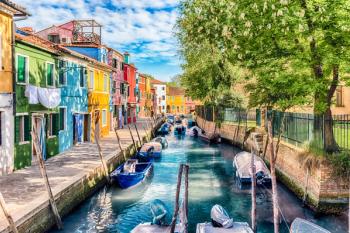
Raman and AI for Pathological Classification
Scientists are using Raman spectroscopy and AI technology to streamline the pathological classification process.
Scientists from Biahang University and Capital Medical University in Beijing, China are using Raman spectroscopy and artificial intelligence (AI) technology to streamline the pathological classification process. Their findings were published in Analytical Chemistry (1).
The use of AI alongside analytical techniques has become a hot topic among scientists. Machine learning, for example, can self-iterate and optimize problem solving for modeling data in an automated way, using computational algorithms (2). These methods can be used in image and speech recognition, natural language processing, and predictive modeling, among other areas. Machine learning and chemometrics also use statistical and computational methods to analyze and interpret data. Though there is more work to be done around implementing these methods, AI technology can have a positive impact on furthering scientific advancements.
Raman spectroscopy is a non-destructive chemical analysis technique based on the interaction of light with the chemical bonds within a material. It is used to provide detailed information about chemical structure, phase and polymorphy, crystallinity, and molecular interactions (3). Raman spectroscopy is often used for label-free biomolecular analysis of cells and tissues for pathological diagnosis in vitro and in vivo. AI technology can facilitate disease diagnosis based on Raman spectroscopy, including machine learning (PCA and SVM), manifold learning (UMAP), and deep learning (ResNet and AlexNet). Choosing the optimal AI classification model for different types of Raman spectral data is still an unclear process.
To rectify this, the scientists used five representative Raman spectral data sets, including endometrial carcinoma, hepatoma extracellular vesicles, bacteria, melanoma cell, and diabetic skin. Raman and AI technology have been combined in different experiments; for example, an AI system was once designed to understand the chemical pathways and progression of disease. This research analyzed breast cancer tissue samples using Raman spectroscopy combined with principal component (PCA) and linear discriminate analysis (LDA) (4).
After the data sets were selected, different characteristics regarding sample size, spectral data size, Raman shift range, tissue sites, Kullback–Leibler (KL) divergence, and significant Raman shifts (i.e., wavenumbers with significant differences between groups) were considered to test the performances of different AI models.
When analyzing data sets of large spectral data sizes, ResNet perfomed better than principal component analysis–support vector machine (PCA–SVM) and uniform manifold approximation and projection (UMAP). By building a data characteristic-assisted AI classification model, the scientists optimized the network parameters (principal components, activation function, loss function) of AI models based on data size, among other factors. The accuracy improved from 85.1 to 94.6% for endometrial carcinoma grading, from 77.1 to 90.7% for hepatoma extracellular vesicles detection, from 89.3 to 99.7% for melanoma cell detection, from 88.1 to 97.9% for bacterial identification, from 53.7 to 85.5% for diabetic skin screening, and a mean time expense of 5 s.
References
(1) Chen, X.; Shen, J.; Liu, C.; Shi, X.; Feng, W.; et al. Applications of Data Characteristic AI-Assisted Raman Spectroscopy in Pathological Classification. Anal. Chem. 2024, 96 (16), 6158–6169. DOI:
(2) Workman Jr., J.; Mark, H. Artificial Intelligence in Analytical Spectroscopy, Part I: Basic Concepts and Discussion. MJH Life Sciences 2024.
(3) What is Raman Spectroscopy? Horiba Scientific 2024.
(4) Workman Jr., J.; Mark, H. Artificial Intelligence in Analytical Spectroscopy, Part II: Examples in Spectroscopy.
Newsletter
Get essential updates on the latest spectroscopy technologies, regulatory standards, and best practices—subscribe today to Spectroscopy.





